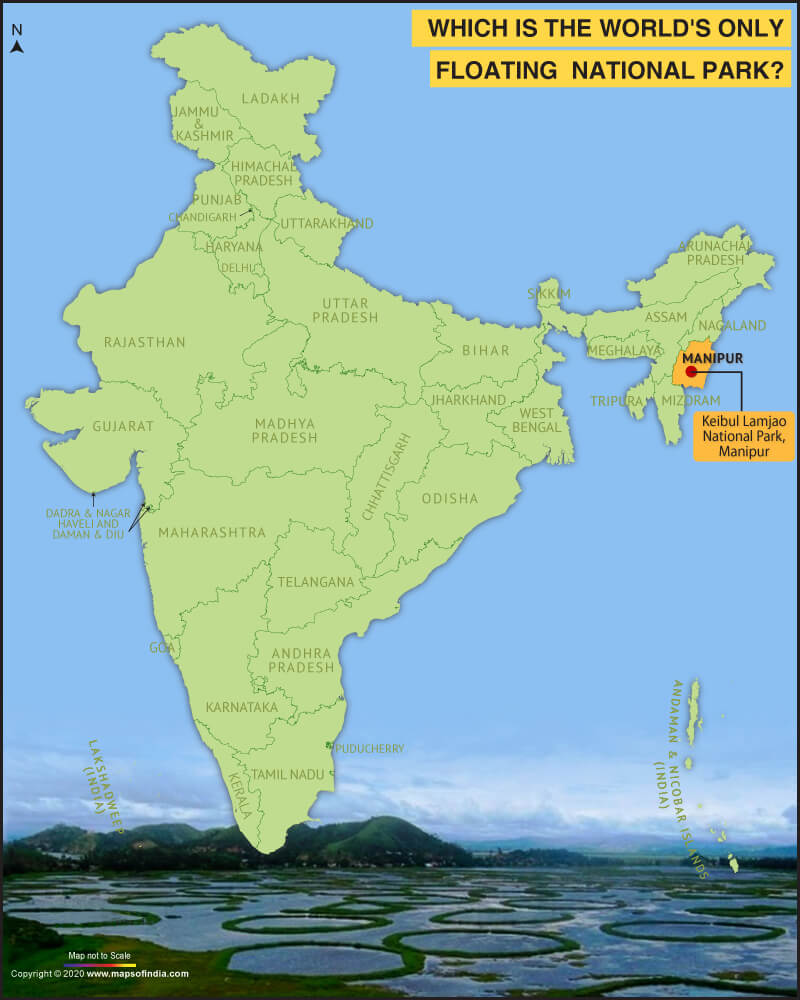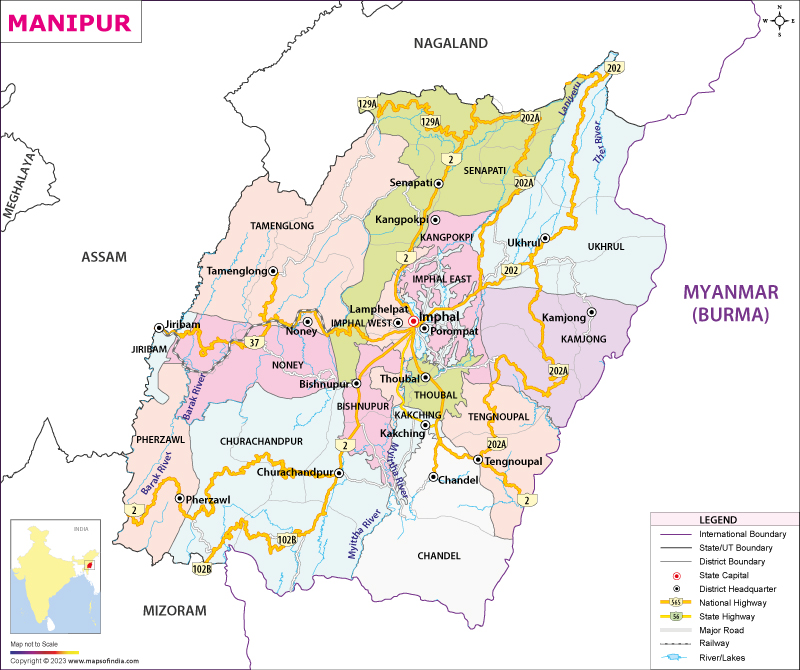

The Keibul Lamjao National Park is the one and only floating national park in the world.
It is located in the Indian state of Manipur’s Bishnupur district. Spread across 40 sq. km, it forms an essential part of Loktak Lake.
It is characterised by the phumdis, a local term for the decomposed floating plant materials. Initially, the park was declared a sanctuary in 1966. However, to preserve the endangered brow-antlered deer, also known as the dancing deer, it was turned into a national park through a gazette notification in the year 1977. The act has drawn public support and created awareness.
There has also been a film, called The Return of Sangai, that gives deep insight into the Keibul Lamjao National Park.
Geography and Topography of the World’s Only Floating National Park
The park is formed by 66-75% of phumdis. These are actually thickened biomass with soil particles. There is also a water way through the park from where boats can go from the Loktak Lake to the Pabot Hill. The park has a distinctive nature, for it is “too deep to be marsh, too shallow to be a lake”.
Hydrologic Features
This region receives an average 1,183 mm rainfall annually. Months of February and March are the driest and that of July and August are the wettest. Since the park is formed by phumdis, its size varies with the seasons. The temperature here ranges from a minimum of 1.7 °C in winters to a maximum of 34.4 °C in summers. Humidity peaks in August with average records of 81% and reaches a minimum of 49% in March.
Flora and Fauna
The park has a rich ecosystem.
Aquatic Flora:
The aquatic flora found here is diverse. The list includes Phragmites karka (tou), Nelumbo nucifera (thambal), Hedychium coronarium (loklei), Eichhornia crassipes (kabokang), Alpinia galanga (pullei), Cynodon dactylon (tinthou), Dioscorea bulbifera (phumha), Eiranthus procerus (singnang), S. Bengalensis, Saccharum munja (khoimom), and Zizania latifolia (wild rice, ishing kambong).
Fauna
Other than the dancing deer, there are several other flagship species of fauna in the category of mammals, fishes, and amphibians & reptiles. Mammals include sambar, flying fox, common shrew, musk shrew, bay bamboo rat, golden cat, jungle cat, fox, common otter, large Indian civet, wild boar, and hog deer.
Fishes include pool barb, Wallago attu, common carp, Channa punctatus, and Channa Striata.
In the list of amphibians & reptiles, there are common lizard, checkered garter snake, Russel’s viper (Daboia), python, Asian rat snake, banded krait, water cobra, cobra, krait, viper, and keel back tortoise.
Avifauna
The bird species found here belong to both resident and migratory category. Prominent species include crimson-breasted pied woodpecker, Indian white-breasted waterhen, Burmese sarus sarus crane, threatened hooded crane, ruddy shell duck, blue-winged teal, spotbill duck, yellow headed wagtail, lesser eastern jungle crow, North Indian black drongos, Burmese pied myna, northern hill myna, lesser sky-lark, black kite, and East Himalayan pied kingfisher.
Related Map:


